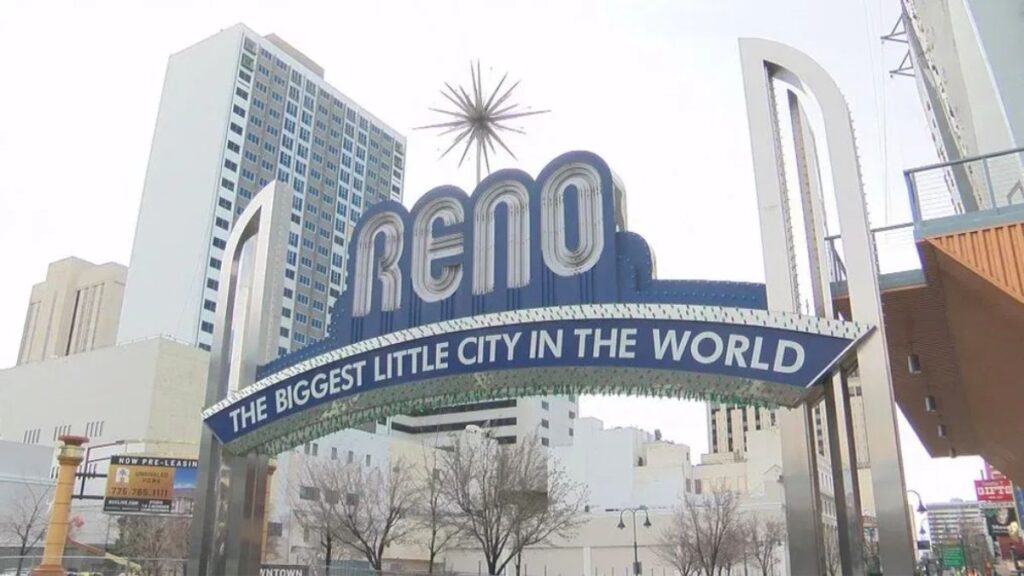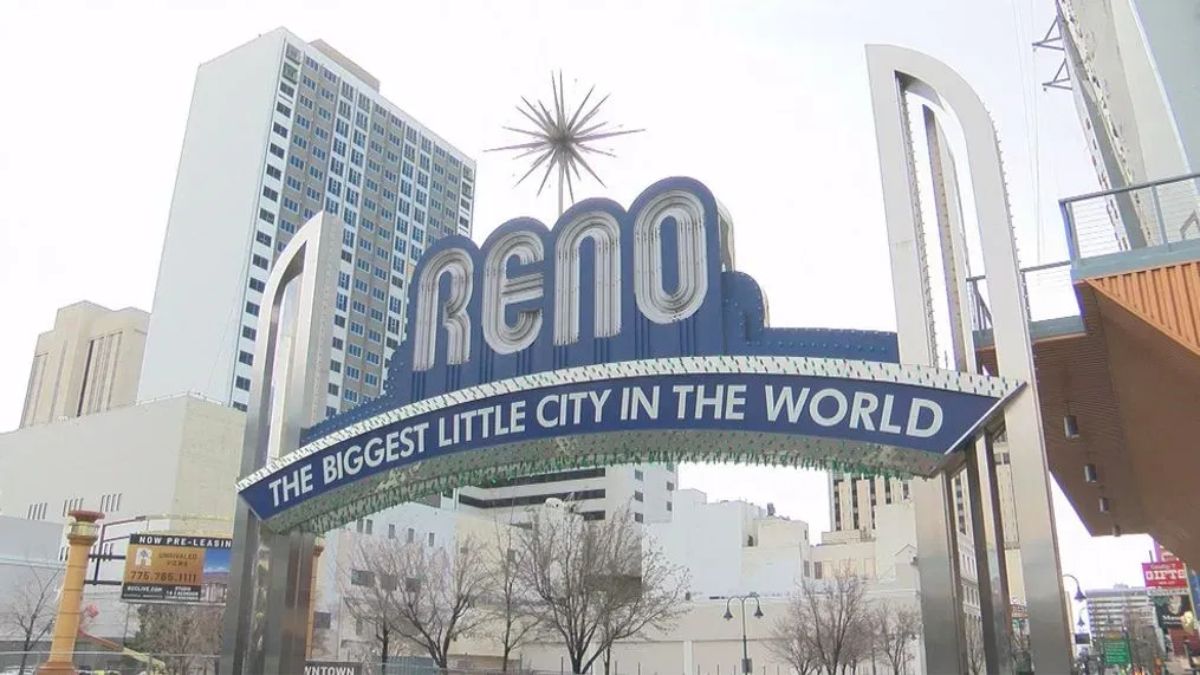Yes, it does snow in Reno, Nevada. The city’s proximity to the Sierra Nevada Mountains contributes to the snowfall it receives. While the amount of snowfall can vary from year to year, on average, Reno receives around 20 inches of snow annually.
Reno experiences snowfall during the winter months, typically from December to February. The snowfall in Reno provides opportunities for winter activities such as skiing, snowboarding, and snowshoeing, attracting outdoor enthusiasts to the region.

Reno, Nevada, is also known as “The Biggest Little City in the World.” It is a popular tourist destination for its vibrant casinos, entertainment, and outdoor recreational opportunities. While the region experiences hot and dry summers, the question arises: Does it snow in Reno?
In this article, we will explore the winter climate of Reno, its average snowfall, and the snow-related activities that make this city a true winter wonderland.
Location Overview
Reno is located in Washoe County, in the northwestern part of Nevada, near the California border. It is situated at an elevation of approximately 4,500 feet above sea level. Reno is about 35 miles from Lake Tahoe and around 32 miles south of Carson City, the capital of Nevada.
The city is known for its high desert setting, surrounded by the scenic Sierra Nevada mountain range. Reno has its own international airport and is well-connected by major highways like Interstate 80 and Interstate 580.
Geography and Climate of Reno
Reno is known for its high desert environment, featuring dry and rocky terrain with sagebrush vegetation. The Truckee River flows through Reno. The city is about 35 miles from Lake Tahoe, providing easy access to the scenic beauty of the freshwater lake.
Reno enjoys a semi-arid climate with four distinct seasons. Winters in Reno are generally cold, but the level of snowfall can vary significantly from year to year. Reno experiences unique weather patterns influenced by its proximity to the Sierra Nevada Mountains and the Pacific Ocean.
The high desert location influences the weather patterns, resulting in significant temperature fluctuations between day and night. Summers are generally warm, with temperatures averaging in the 90s Fahrenheit, while winters can be cold, with average highs in the 40s Fahrenheit and lows dropping below freezing.
Historical Snowfall Record
The historical snowfall record of Reno provides insight into the city’s past snowfall patterns. Here are some notable snowfall records from previous years:
- Greatest Single-Day Snowfall
On February 17, 1990, Reno experienced its highest single-day snowfall on record, with a total of 18 inches of snowfall in a 24-hour period. This significant snowfall impacted the city and its surrounding areas.
- Snowiest Month
The snowiest month in Reno’s history was January 1950, when the city received a total of 45.7 inches of snowfall throughout the month. This record-breaking snowfall had a considerable impact on daily life and local activities.
- Snowfall Season Totals
The snowfall season of 1992-1993 holds the record for the highest cumulative snowfall in Reno. During that season, Reno received a total snowfall accumulation of 72.9 inches, making it one of the snowiest seasons on record.
It is important to note that these records represent specific instances in Reno’s history and do not reflect the typical snowfall patterns for each winter season. Snowfall amounts can vary significantly from year to year, and these records highlight exceptional snowfall events.
Winter Season & Snowfall Pattern
The amount of snowfall in Reno can vary due to a variety of factors, including weather patterns, elevation, and storms moving through the area. Some years, Reno may experience light dustings of snow, while other years can bring significant snowstorms that cover the city and surrounding areas in a blanket of white.
Locations to Enjoy Snow
The winter season in Reno offers a range of activities for locals and visitors to enjoy. With the nearby mountains covered in snow, outdoor enthusiasts can partake in skiing, snowboarding, snowshoeing, and snowmobiling.
Reno itself does not have ski resorts or significant snowfall within the city limits. However, Reno’s proximity to the Sierra Nevada Mountains and its high desert location makes it an excellent base for accessing nearby snowy destinations.
Here are a few locations near Reno where you can enjoy snow:
- Lake Tahoe
Just a short drive from Reno, Lake Tahoe offers spectacular winter scenery and a range of winter activities. You can enjoy skiing, snowboarding, and snowmobiling in the various ski resorts around the lake, such as Heavenly Mountain Resort, Squaw Valley, and Northstar California Resort.
- Mt. Rose Ski Tahoe
Located approximately 25 miles from Reno, Mt. Rose Ski Tahoe is the closest ski resort to the city. It offers a range of slopes for all skill levels and breathtaking views of the surrounding mountains.
- Donner Ski Ranch
Situated near Donner Lake, about 45 miles west of Reno, Donner Ski Ranch is a family-friendly ski area with a relaxed atmosphere. It provides skiing, snowboarding, and tubing opportunities.
- Boreal Mountain Resort
Located about 45 miles west of Reno, Boreal Mountain Resort offers a range of winter activities, including skiing, snowboarding, terrain parks, and tubing. It is known for its innovative features and night skiing.
- Diamond Peak Ski Resort
Situated in Incline Village, on the northeastern shore of Lake Tahoe, Diamond Peak Ski Resort offers stunning lake views and a family-friendly atmosphere. It features ski slopes for all abilities and a variety of winter activities.
These locations provide ample opportunities to enjoy snow sports and the scenic beauty of the Sierra Nevada Mountains near Reno. Whether you are a skiing enthusiast or simply want to immerse yourself in a winter wonderland, these destinations offer exciting options for snow-filled adventures.
Factors Influencing Snowfall
Factors influencing snowfall in Reno, Nevada:
- Elevation
Reno’s higher elevation allows for colder temperatures, increasing the likelihood of snowfall.
- Sierra Nevada Mountains
The nearby mountains enhance snowfall by forcing air to rise and condense moisture into snowflakes.
- Storm Tracks
The path of storm systems determines the amount of snowfall Reno receives.
- Pacific Storms
Moisture from Pacific storms contributes to heavier snowfall in the region.
- Temperature Inversions
Inversions can affect snowfall by allowing rain instead of snow or melting snowflakes before they reach lower elevations.
- La Niña and El Niño
These climate patterns can influence snowfall amounts, with La Niña enhancing and El Niño potentially reducing snowfall.
- Weather Systems and Atmospheric Conditions
Various weather systems and atmospheric factors interact to determine if precipitation falls as snow or rain.
Conclusion
While Reno’s climate is generally characterized by hot, dry summers, it does indeed experience snowfall during the winter months. The amount of snowfall can vary from year to year, but on average, Reno receives around 20 inches of snow annually.
This snowy weather presents a great opportunity for outdoor winter activities, making Reno an attractive destination for those seeking a winter wonderland experience. So, if you’re planning to visit Reno during the winter season, don’t forget to pack your warm clothes and be prepared to embrace the snowy charm.
